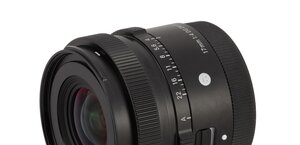Nikon Nikkor AF-S 24 mm f/1.4G ED
3. Build quality
The photo below shows the tested lens positioned between the Nikkor 24-70 mm f/2.8 and the Nikkor 1.8/50.
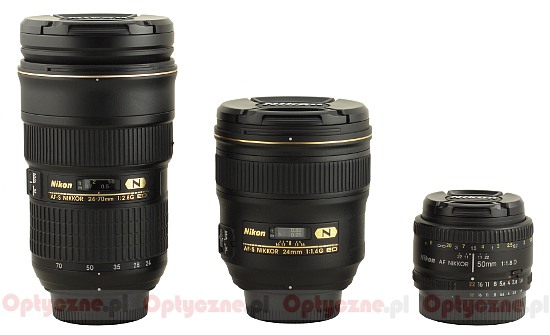 |
Please Support UsIf you enjoy our reviews and articles, and you want us to continue our work please, support our website by donating through PayPal. The funds are going to be used for paying our editorial team, renting servers, and equipping our testing studio; only that way we will be able to continue providing you interesting content for free. |
- - - - - - - - - - - - - - - - - - - - - - - - - - - - - - - - - - - - - - - - - - - - - - - -
The lens starts with a metal mount with contacts – it surrounds the rear element which is 33 mm in diameter. The element is situated on the same level as the mount when the sharpness is set at infinity. On passing to the minimum focus the rear elements hides about 0.5 cm deep inside the barrel. In that position you can notice a slit, 2 mm wide, resultant between the inner mount rim and the element –dust might penetrate inside the lens through it.
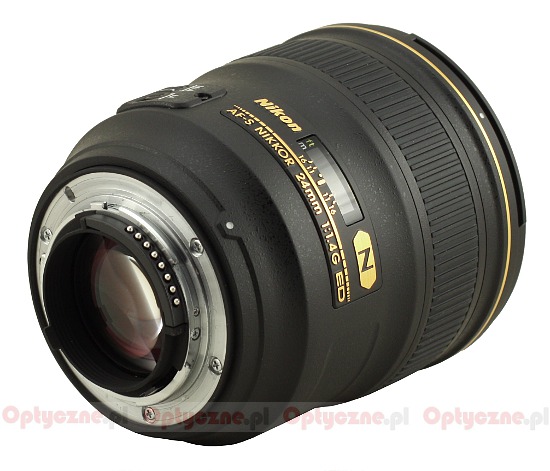 |
Right behind the mount on the casing you can find a plate with the name of the lens, its parameters and a capital ‘N’ meaning that Nano Crystal Coatings have been implemented there. Inside the plate, behind a window, there is a distance scale expressed in metres and feet and right behind it, depth of field markings by f/11 and f/16 apertures. On the left you can find a focusing mechanism mode switch (M/A-M) and, on the other side of the lens, a serial number of the lens, the information concerning its parameters, diameter, filters and the inscription ‘Made in Japan’.
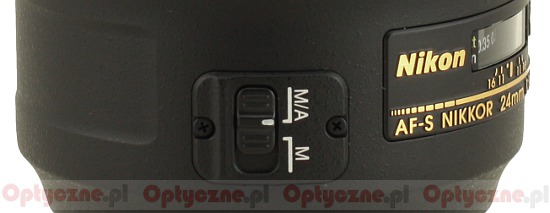 |
Further on there is a manual focus ring, 22 mm wide and ribbed. Its work is smooth and well-damped, allowing you to set focus with great precision. Running through the whole distance scale takes approximately a 140-degree turn.
At the front of the lens you see an immobile front element 5 cm in diameter. It is surrounded by a non-rotating filter thread with a diameter of 77 mm and a hood thread.
When it comes to the optical construction the Nikkor 1.4/24 comprises 12 elements positioned in 12 groups. Two elements were made of low-dispersion ED glass and two others are aspherical. Inside you can also find surfaces covered by Nano Crystal Coat. A circular aperture has nine diaphragm blades and can be closed down to f/16 at the most.
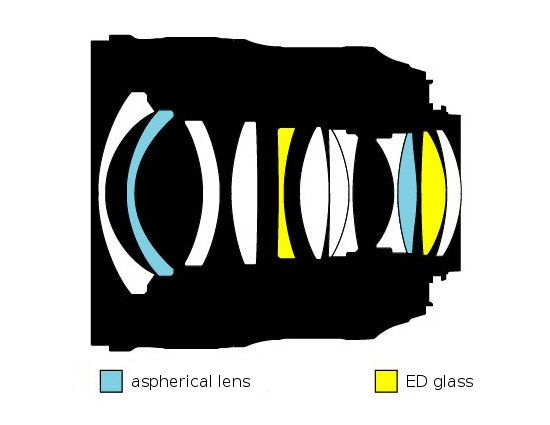 |
The buyer gets both caps, a petal type lens hood and a soft pouch included in the box.
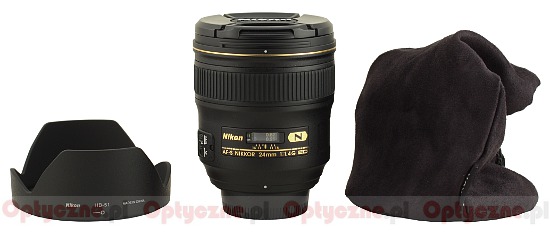 |





